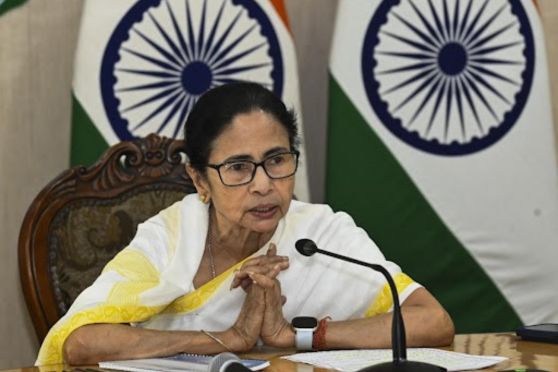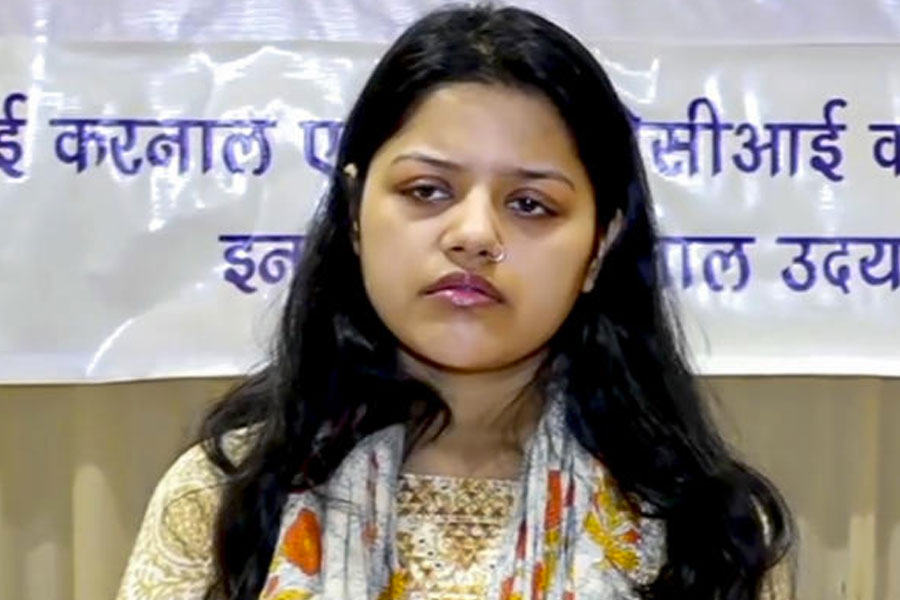A fine day for a hanging

Richard Wilson says: "London is the art capital of the world - and the Summer Exhibition is the most important of the year." As co-ordinator and "head hangman", Wilson is in overall charge of this year's exhibition, the 248th at the Royal Academy, but other members of the hanging committee help to identity the 1,240 works finally selected for display from more than 12,000 that were submitted.
Wilson estimates that about a third were sent in by members and honorary members of the Royal Academy and by "invited guests", the rest through open submission.
Artists in India should certainly begin submitting their work, digitally if nothing else, especially as the Royal Academy is gearing up to celebrate its 250th Summer Exhibition in 2018.
Quite ingenious is the work by the invited Turkish filmmaker and artist, Kutlug Ataman, who has produced an unusual portrait of Sakip Sabanci, a much admired industrialist who died 12 years ago. A panel hangs from the ceiling but closer inspection reveals it consists of 10,000 tiny TV-like screens with flickering passport photographs of Sabanci's 30,000 employees.
Wilson is "incredibly optimistic" about the state of British art - though personally I think the Royal Academy needs to be a lot more diverse. This year I spotted only three British Asian artists - Shanti Panchal, and the Singh Twins, Rabindra and Amrita. And the latter only got in because Wilson has introduced the idea of "duos" - artists who work together - this year.
"This is not just artists from London or artists from the UK - we have an international line-up," said Wilson, as he gave journalists a tour last week. "It is open and diverse in every sense."
I would call the diversity issue work in progress. That said, this year's Summer Exhibition is very different from previous years. Wilson and his hangmen and women certainly have produced something quite invigorating this year.
I will repeat what I say every year. India should move towards a national open submission exhibition. It is incredible that the Royal Academy has been doing this for 248 years. On balance I think Wilson is right - London is the art capital of the world. But then I also think London has become the capital of Greater India.
Model move

The rugged and clean-cut David Gandy, who is Britain's number one male model, has just been confirmed as the new global brand ambassador for Indian-owned Vitabiotics, the "UK's No. 1 vitamin company".
The signing, probably for £1 million, represents quite a coup for Sikh entrepreneur and author Kartar Lalvani, 85, a trained chemist with a PhD from Bonn University who came to Britain from India in 1956, set up Vitabiotics in 1971, and now runs the company with the help of his sons, Ajit and Tej.
At 36, the 6ft 3in tall Gandy has been the face of Dolce & Gabbana, designed his own range of underwear and swimwear for Marks & Spencer, represented Savile Row tailors, Henry Poole & Co, and been dubbed "the most stylish man of the year" in 2015.
I enjoyed a quip from a newspaper reader: "He looks nothing like his uncle Mahatma."
Indian romance

English artists often have a romantic vision of India, none more so than 65-year-old Lincoln Seligman who last week offered some 50 of his paintings for sale.
Perhaps India is in his genes. Rudyard Kipling, a neighbour, "was my mother's godfather", while his paternal grandmother, Hilda Macdowell, was a painter who lived in the Himalayas.
By the time I arrived unfashionably late for the launch at the Osborne Studio Gallery, of Motcomb Street, in Knightsbridge, 30 of the paintings had red stickers on them to denote they had been sold.
The "intoxicating" paintings were mostly a result of a trip Seligman and his wife, Patricia, had undertaken earlier this year with a small party of friends to Varanasi, Orchha, Gwalior, Fatehpur Sikri and Jaipur.
He had taken several paintings to the India Air Fair in Delhi, but all returned unsold. This explains why he is especially pleased that half a dozen of his paintings were snapped up last week by British Indian buyers.
His paintings of the Republic Day Parade, of the Camel Corps, for example, which have a vibrant, impressionist feel, have been particularly popular.
Why there should be such a difference in taste between Indians in England and in India is not immediately clear.
Sweet nothings
Is Tamal Kumar Ray thinking of opening a cake shop in Calcutta?
Tamal, it will be recalled, is a 30-year-old anaesthetist who developed quite a following over the weeks as he baked cakes getting to the finals of the Great British Bake Off last year.
His recent article in The Guardian, after a trip to Calcutta with his parents, suggests he sees a gap in the patisserie market.
"Perhaps we'll see a new generation of Bengali patissiers combining a knowledge of eastern flavours with European baking skills to bring something new and exciting to the world," adds Tamal. "If it were to happen anywhere, I'd put money on it happening in Kolkata, inspired by the same marriage of east meets west on which this great city was founded."
Tamal's Tarts should do very well in Park Street.
Tagore's children

The playwright Tanika Gupta probably never had anyone at home encouraging her to do anything other than the arts. Her father Tapan Gupta was a singer who established The Tagoreans in 1965.
Her mother, Gairika Gupta, a classically trained dancer - she remains artistic director of the Tagoreans - sat with Tanika for the press night of her daughter's two-hander play, Love N Stuff , at the Theatre Royal Stratford East last week. So did Tanika's hubby, David Archer.
The play about a couple, Bindi and Mansoor, takes place in the departure lounge of Heathrow where a "Desi Airlines" flight to India has been delayed. This allows Bindi a chance to try to persuade Mansoor not to return to India which he is intent on doing to rediscover his bearings.
The creative industries now exercise such a pull on young British Indians that perhaps Tanika, who read modern history at Oxford, should write a play in which Indian parents roundly scold their child: "You will study exactly what we want you to study at university - and that is drama. No more nonsense about wanting to do particle physics at Cambridge! Otherwise we will put you on Desi Airlines flight back to Calcutta."
As usual I exaggerate but, actually, not very much.
Tittle tattle
Tatler magazine, which has just arrived, has a special adverting supplement devoted to "Watches & Jewellery".
A feature on Jaipur, "the gemstone capital of India", recalls the queen of queens: "The most fabulous maharani ever to have lived was from Jaipur, the late Gayatri Devi, third wife of Maharaja Sawai Man Singh II."
Gone but not forgotten - at least, by the British glossy. I knew her a little. No one was more imperious, haughty, bad-tempered but, on occasions, also quite likeable. Strangely, she was dismissive about her extremely readable and fascinating (ghosted) autobiography, A Princess Remembers: Memoirs of the Maharani of Jaipur.










